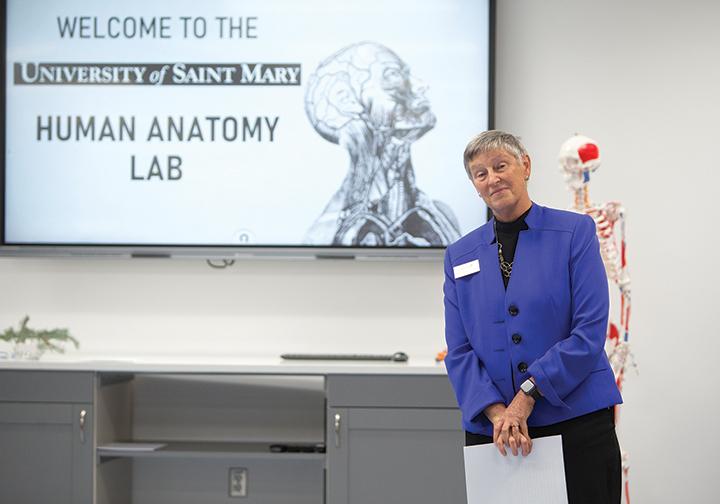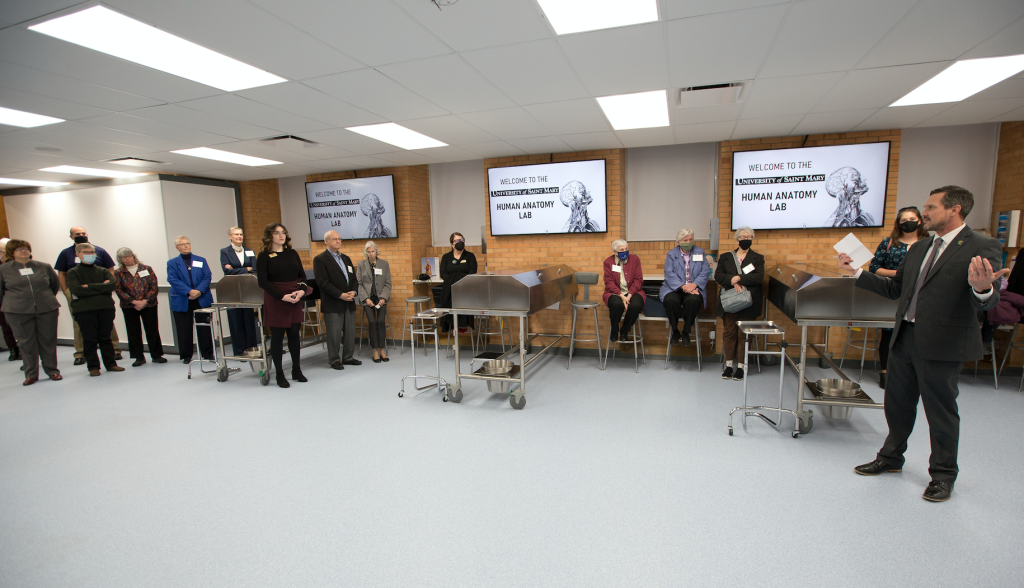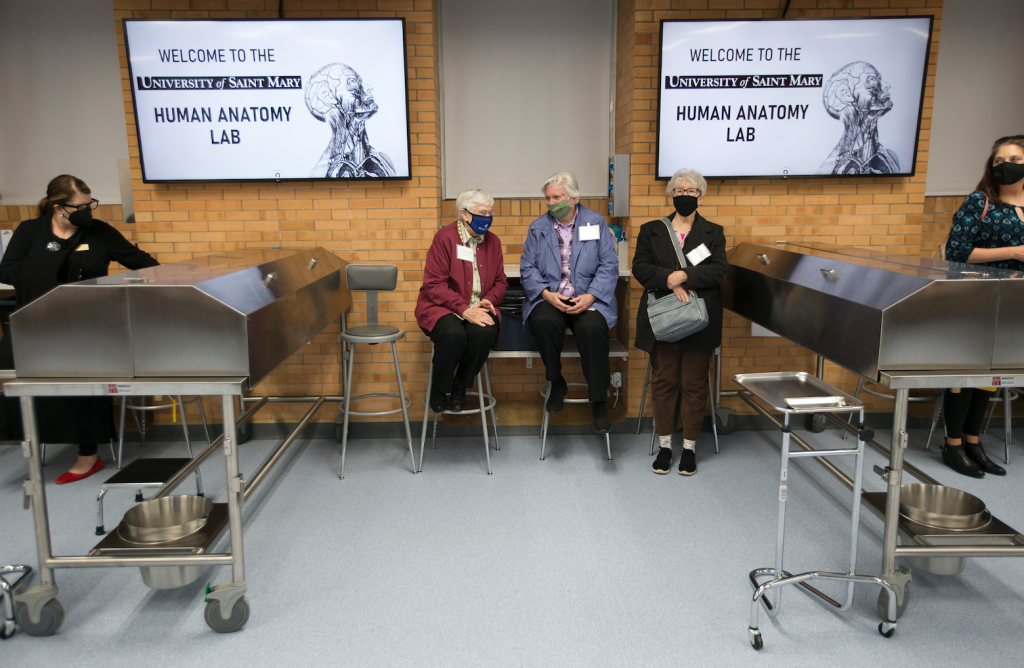
by Dean Backes
Special to The Leaven
LEAVENWORTH — With the new human anatomy lab just completed in early November, the faculty and staff of the University of St. Mary here eagerly showed off their new digs to a small crowd of family, friends and donors on Nov. 3.
In addition to the construction of the lab, the university was able to acquire eight cadavers, as well as portable cameras, which will allow students to better view dissections.
Undergraduate and graduate students alike will have access to the lab, as long as they are in a program connected to health care.
“If you stop and think about how people learn, it’s [by] hands-on experience,” said University of St. Mary provost Michelle Metzinger. “It’s one thing to see it on the screen or in a book, but to be able to touch and actually dissect and do different activities, they’re going to learn where things are at and how to better care for their patients. I mean that’s ultimately what [the goal] is — caring for their patients.”

For vice president of admissions and marketing John Shultz, it’s exciting to be able to offer an educational experience that is second to none.
“This is irreplaceable when it comes to health care education,” Shultz said. “We are thrilled to offer it. Health care is very important to the university because it ties in with the [Sisters of Charity]. When we started the health care focus, it was said that it’s sort of the intersection of society’s need, the tradition of the Sisters and the opportunity for the students. This is taking it to another level. So, we are thrilled to be able to offer this experience to our students.”
Following a brief cocktail hour, guests were led to the lab, where human anatomy lab coordinator Dr. Trisha Waldman demonstrated with slides the transformation of the lab, after which the lab was blessed and dedicated.

The University of St. Mary secured $225,000 in donations from the Sunderland Foundation and several other philanthropic partners before the university’s Joe Beaver went to work building the lab over an old swimming pool.
After about three months of 10-hour days, and plenty of weekends, Beaver and his small but dependable crew were ready to unveil the masterpiece lab. A DOAS HVAC system, that was installed to control humidity, proved to be the most expensive part of the $300,000 project.
“We are thankful to have a fabulous maintenance staff on campus,” said Waldman, who started as a consultant with the university in August. “We were able to do a lot of the work internally. Joe was the primary person. He is kind of a jack-of-all-trades.”
Now that the lab is complete, and there is no need for University of St. Mary students to go elsewhere to earn lab experience, Waldman said community outreach will be a focus.
“I just got off of the phone with the local high schools to see if we can get their students in here to use it,” Waldman said. “We’ve worked with the EMS, and they’ll be able to come in and do some training as well. So, community outreach is definitely a focus in the next semester or two. We want to share the gift that we have.”

Waldman, who had access to a smaller lab while attending college in South Dakota, said having a human anatomy lab along with eight anatomical donors at the undergraduate level is unique. She said every August her program will receive eight different cadavers from KU Medical Center in Kansas City, Kansas.
Students will learn the age and gender of the donor and their cause of death. As new students are allowed into the lab, university staff emphasize to them the importance of respect for the cadavers.
Before receiving the cadavers, Alixandria Wilson, a second-year athletic training student, said she and the other University of St. Mary students used the typical skeleton models that every classroom possesses, as well as YouTube videos.
“We definitely didn’t get the full extent of what the different parts look like or feel like,” Wilson said. “We didn’t get to experience what it actually feels like to be able to tug on a muscle. It wasn’t the real thing, and it makes a difference in the way that we learn.
“We are super excited to be able to start using the lab more frequently in our learning. We are grateful for this opportunity because not everybody is as fortunate as we are.”






